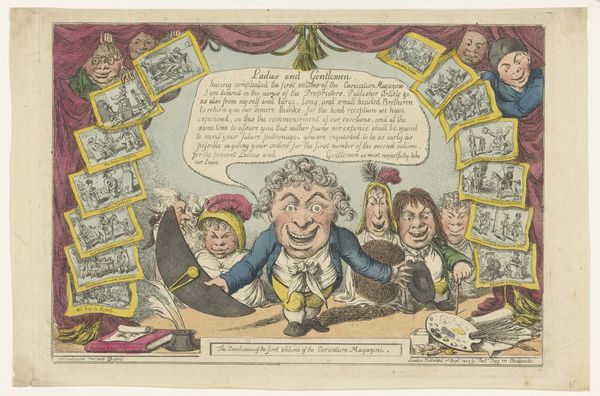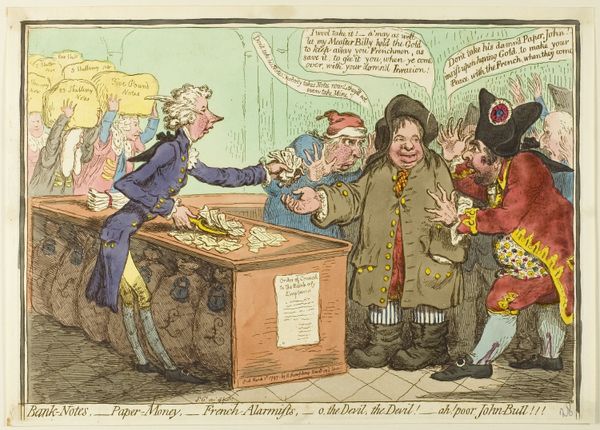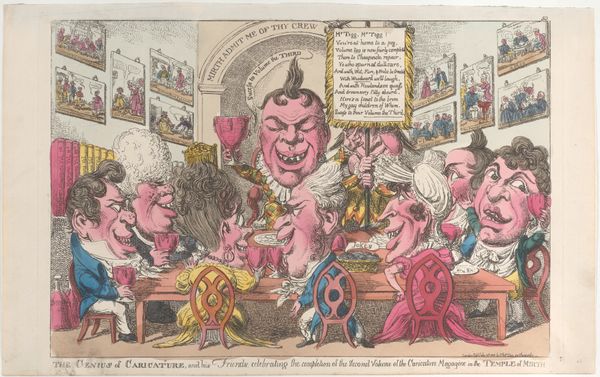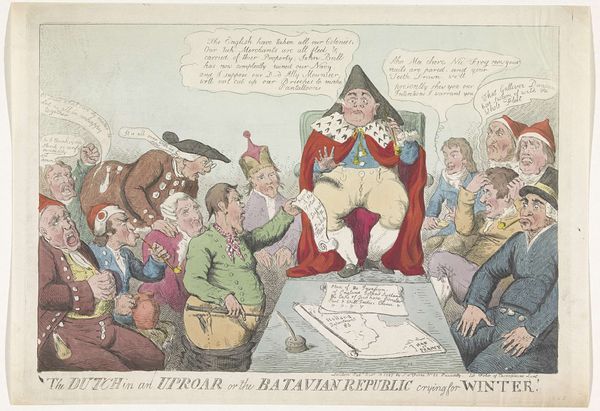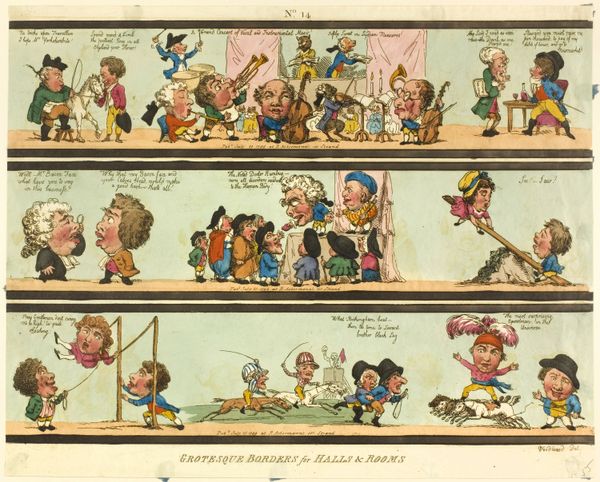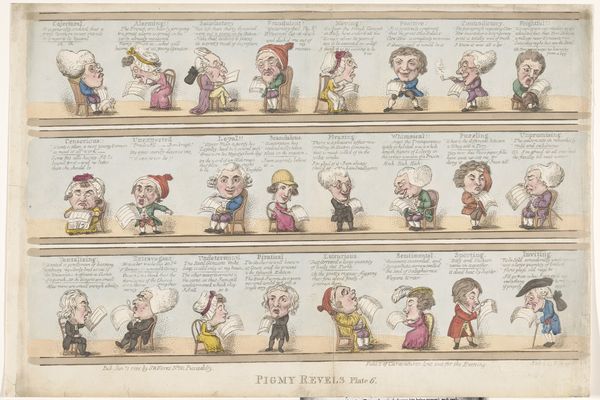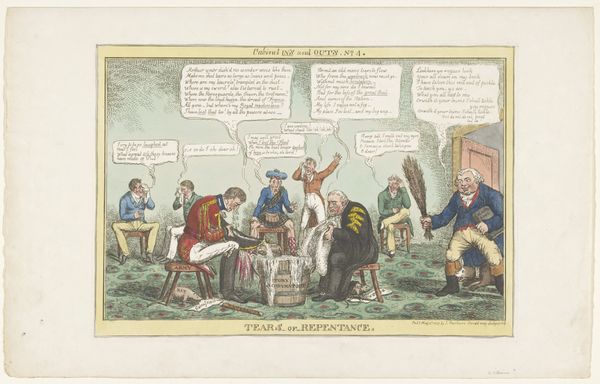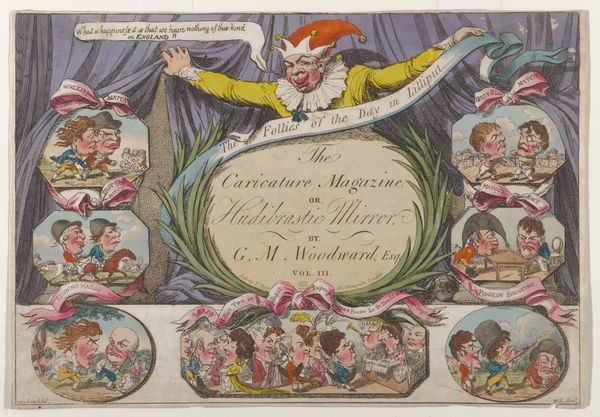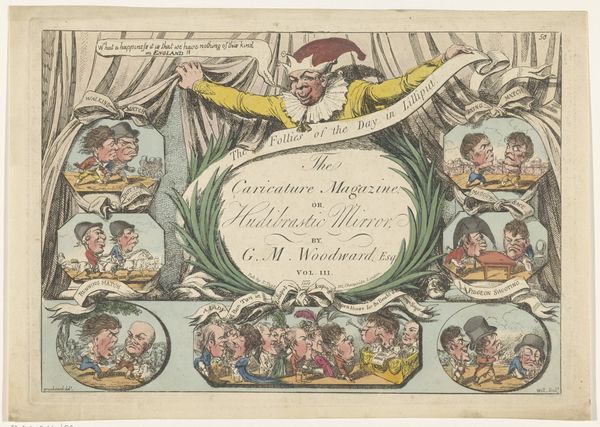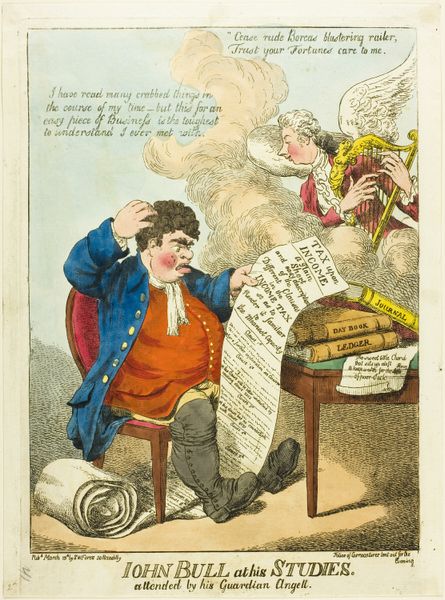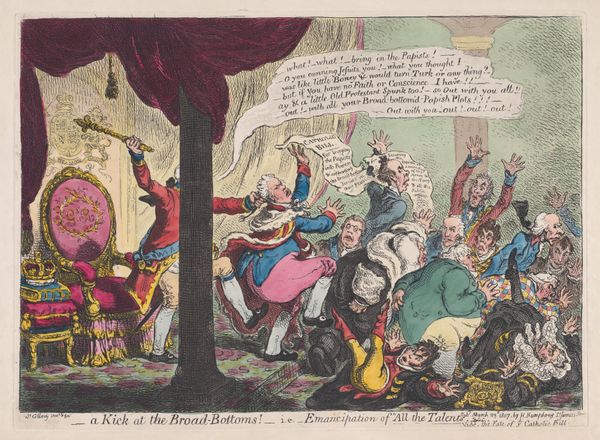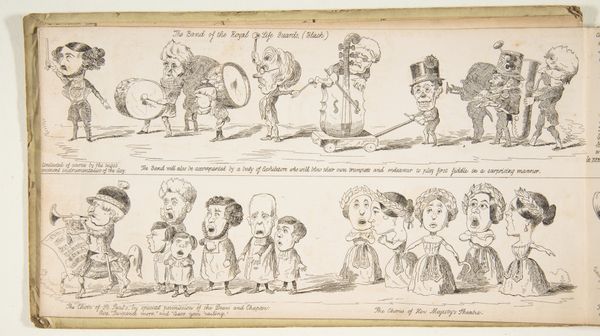
The Conclusion of the first Volume of the Caricature Magazine 1807
0:00
0:00
drawing, coloured-pencil, print
#
portrait
#
drawing
#
coloured-pencil
# print
#
caricature
#
coloured pencil
#
romanticism
#
naive art
#
men
#
genre-painting
Dimensions: Plate: 9 5/8 × 13 11/16 in. (24.5 × 34.8 cm) Sheet: 9 15/16 × 15 9/16 in. (25.3 × 39.5 cm)
Copyright: Public Domain
Curator: This color print, created around 1807 by Charles Williams, is titled "The Conclusion of the first Volume of the Caricature Magazine." What strikes you first about this rather crowded composition? Editor: An immediate impression is its controlled chaos – a sense of exuberance and manic energy barely contained within the frame. It’s like a vaudeville act bursting forth, promising satire and spectacle. The color palette is cheerful, but those grotesque faces! Curator: Precisely! Note how Williams constructs a miniature proscenium arch. Caricatured figures act as the main players while smaller framed scenes of prior magazine cartoons seem to be attached to the pink, fringed curtain. It calls attention to artifice through a theatrical lens, inviting a critical interpretation. Editor: Right. Williams isn't simply producing a pleasing image; he's crafting a self-referential statement about the power dynamics within the satirical magazine itself. I can’t help thinking about the historical moment, specifically the rise of print culture and its impact on the British social and political landscape. Were these magazines truly subversive, or merely catering to an elite readership’s taste for ridicule? Curator: Interesting to consider class politics. Looking closer, the figures themselves present varied, distorted forms, embodying characteristics of different classes and professions. Their exaggerated features conform to established visual codes used in satirical prints of the era. I suggest this as Williams playing into already established systems of recognition and power. Editor: It feels important to point out the obvious fact that caricature, even when seemingly ‘good-natured’, operates through exclusion. The humor relies on reinforcing stereotypes and potentially perpetuating discrimination. It begs the question: whom did these magazines serve, and at whose expense? The cartoon's seeming naivety is deceiving because the figures serve very specific ideologies. Curator: A relevant question when evaluating satirical works of this era. Perhaps we can consider the drawing from the formal aspects—Williams’ usage of line to build the compositions—in order to deconstruct established, dominant ideologies from within. Editor: Or perhaps the goal should be a reckoning with the cultural biases inherent in satirical traditions as well as considering the artist’s conscious and unconscious complicity in power structures. Curator: In all, Williams offers an image layered in commentary, consciously inviting debate over form and content. Editor: Precisely, even two centuries on. The questions raised continue to resonate loudly and meaningfully today.
Comments
No comments
Be the first to comment and join the conversation on the ultimate creative platform.
